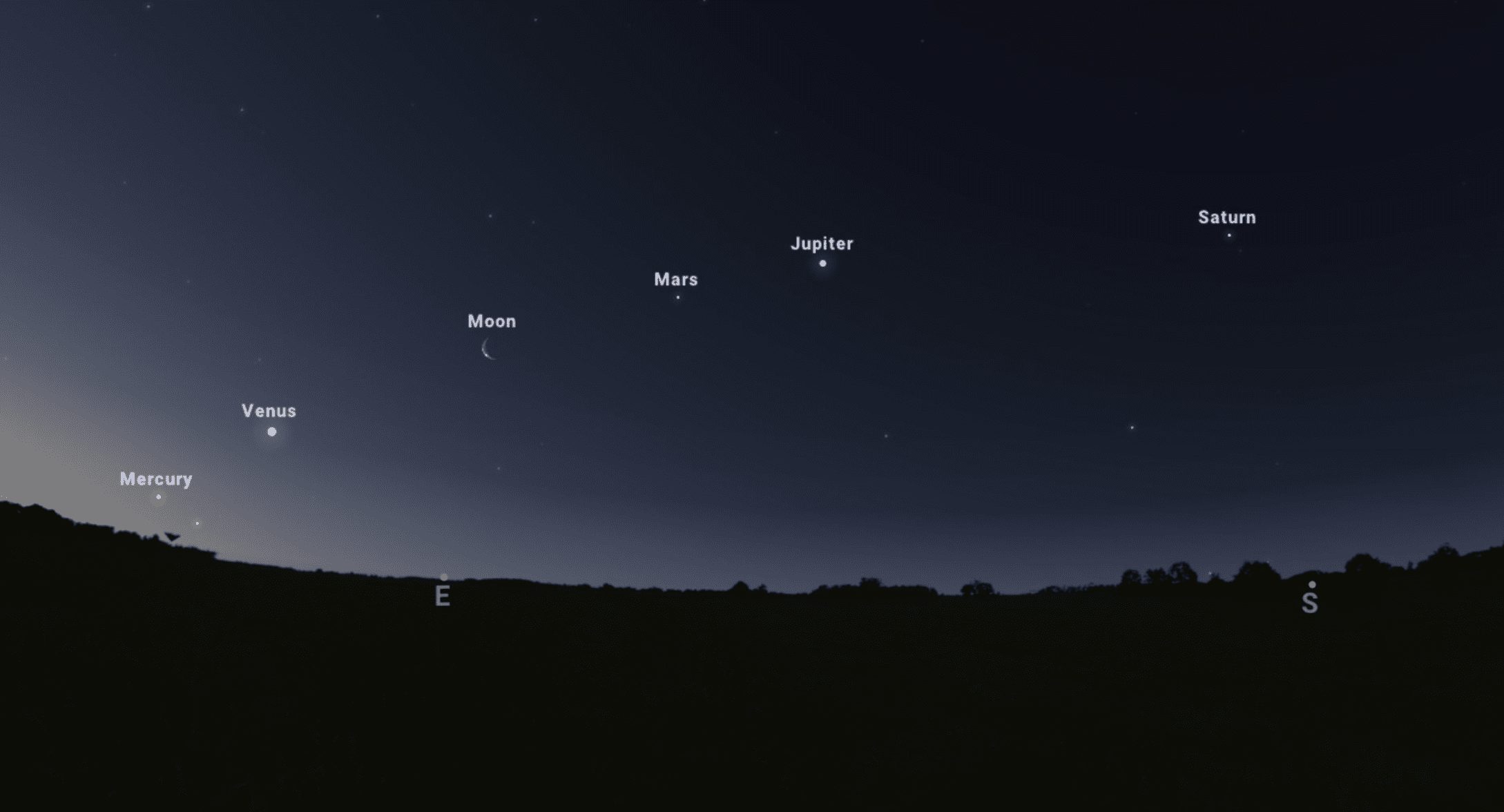The early morning sky on Friday revealed a rare sight to behold. Five planets aligned with the moon, visible to the naked eye. Though Friday before dawn offered the clearest view, the spectacle will be observable for a total of five nights.
The lineup begins with Mercury — which, at its closest to the horizon on Friday morning, will be easier to spot throughout the end of the month — followed by Venus, the moon, Mars, Jupiter, and Saturn, which will be the farthest away.
Those interested in observing the night sky in the Northern Hemisphere should head outside 30 to 45 minutes before sunrise and select a location that provides unobstructed views of the eastern and southeastern horizons.
There is still time to see the planets in alignment in the coming days. The schedule is as follows:
June 26: A very slim, waning crescent moon will appear to the left of Venus.
June 27: An even slimmer crescent will appear to the left of Mercury.
While it is common to see two planets aligned, the conjunction of five planets is rare.
The planets will eventually spread out in the predawn sky, “so much so that Venus and Saturn will make their exits as morning objects for most observers by September,” NASA said.
The last time all five planets could be seen with the naked eye in sequence across the horizon was in December of 2004. However, this year, the distance between Mercury and Saturn is significantly smaller.
Also visible this month is one of the smallest constellations, Lyra. Lyra is named for the lyre (similar to a harp), played by the musician Orpheus in Greek mythology. In some cultures, the constellation is likened to an eagle or a llama, and it has even been compared to an engagement ring, with its brightest star, Vega, serving as the diamond.
Find Lyra by looking for Vega, the westernmost of the three bright stars in the Summer Triangle. In the Northern Hemisphere, Lyra can be seen halfway up the eastern sky in the first couple of hours after dark in June. A pair of binoculars reveals the other stars in Lyra’s parallelogram hanging below it.






